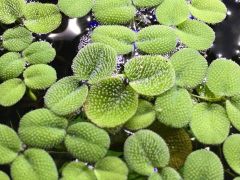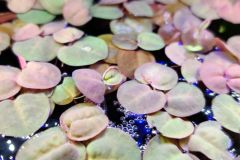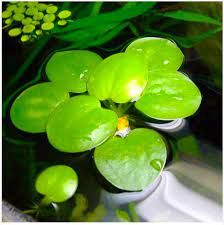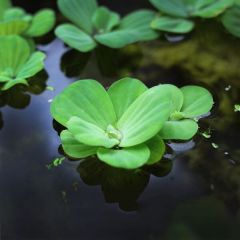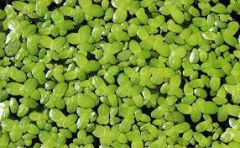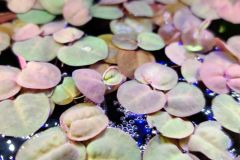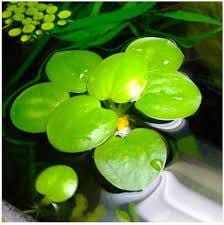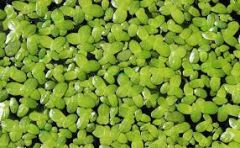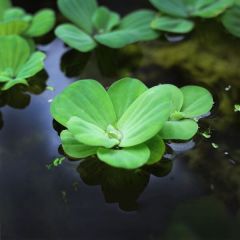Ultimate Guide to Floating Aquarium Plants: Beautify Your Planted Tank
Are you looking to enrich your aquarium’s ecosystem with floating aquarium plants? These natural wonders aid in oxygenation, provide shelter for fish, and keep the water clean. This article will guide you through choosing, maintaining, and benefitting from these essential aquatic plants without giving away the precise how-to’s we’ll cover further on.
Table of Contents
Key Takeaways
- Floating plants not only enhance the visual appeal of aquariums, but also boost oxygen levels and provide shelter for fish.
- Healthy growth of floating aquarium plants depends on proper lighting, nutrient levels, and filtration to create an ideal environment.
- Diverse floating plant species can enhance aquarium ecosystems in unique ways, from fast-growing Salvinia Minima to pest-preventing Azolla Filiculoides.
The Allure of Floating Aquarium Plants

Floating plants, with their intriguing shapes and vibrant colors, can turn an ordinary aquarium into an extraordinary aquatic paradise. But their appeal extends beyond aesthetics. These aquatic powerhouses play a pivotal role in oxygenating your tank and providing a safe haven for your aquatic pets.
We will delve further into the captivating charm of these aquatic wonders, observing the fish swimming gracefully through their natural habitat.
Visual Appeal
Floating plants are the artists of the aquatic world. With their distinctive rosettes and round leaves, they add an element of elegance to your tank, replicating the diversity found in nature. As a type of aquatic plant, whether it’s the dense mats of Salvinia leaves or the swift green coverage of Duckweed, each floating plant contributes its unique texture and color to the canvas of your aquarium, enhancing its overall aesthetic appeal.
Oxygenation Powerhouses
Floating plants are the lungs of your aquarium. Through photosynthesis, they utilize light for producing oxygen, vital for the health of your tank’s inhabitants. They also absorb harmful ammonia, converting it into nitrate and contributing to the oxygenation process.
Intriguingly, these diminutive plants bear a significant responsibility in maintaining your aquarium’s ecosystem equilibrium.
Sanctuary for Aquatic Life
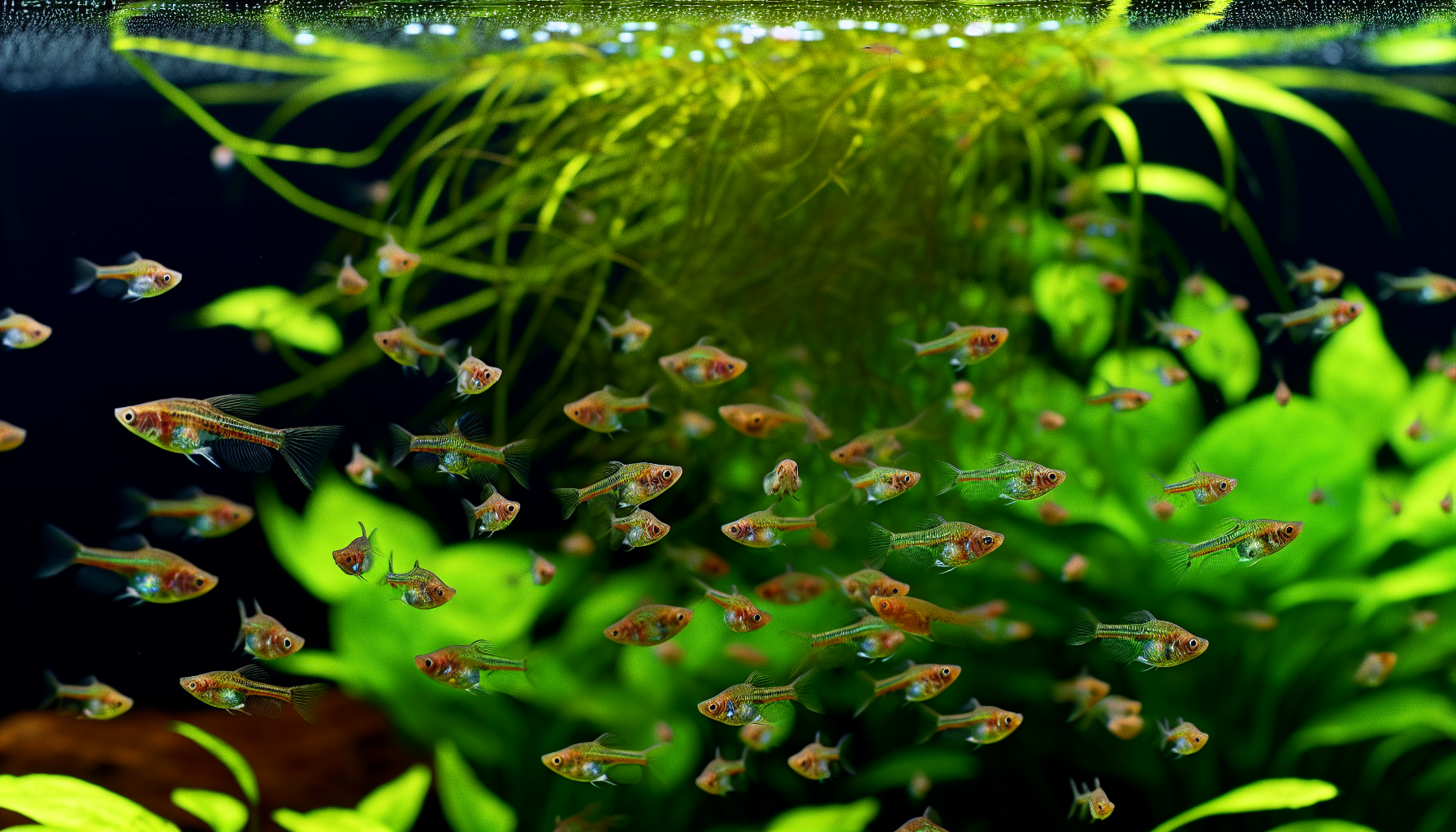
Floating plants are more than just pretty decorations; they are also the protectors of your aquarium’s inhabitants. The intricate root systems of these plants provide a sanctuary for small or shy fish, offering them a safe place to hide from more dominant tank mates. It’s like having a protective canopy right at the water’s surface!
Cultivating Healthy Floating Plants
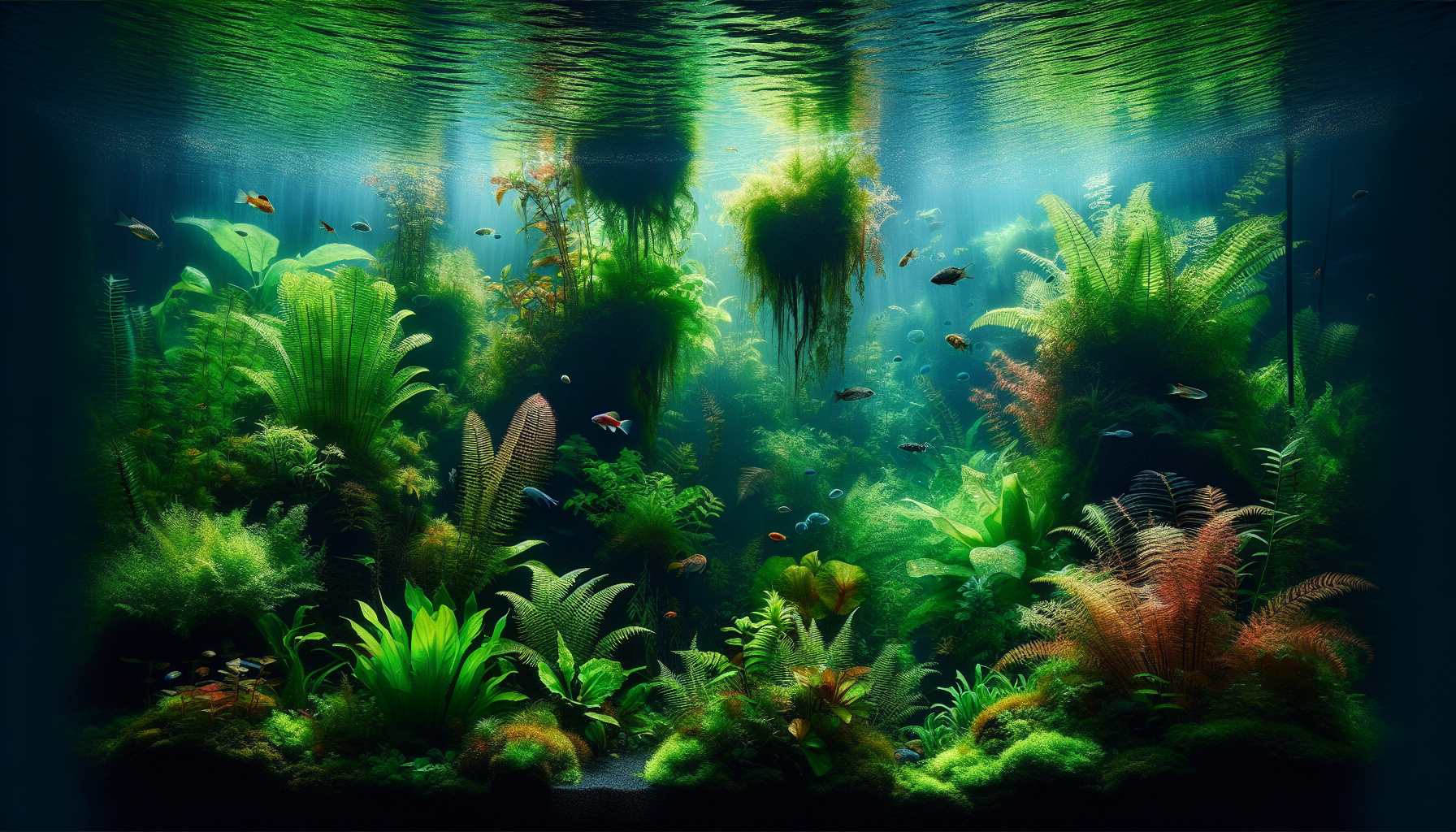
Understanding the correct cultivation methods is key to unlocking the full potential of floating plants. This includes adjusting lighting, filtration, and nutrient levels to create the perfect environment for your plants. We will examine some of these influencing factors in detail.
Lighting Needs
Lighting plays a crucial role in the growth of floating plants. Being at the water’s surface, they receive more light than their submerged counterparts, promoting robust growth. However, it’s a delicate balance as excessive lighting can lead to algae blooms, which compete with floating plants for nutrients.
Therefore, maintaining appropriate light levels is fundamental for thriving floating plants.
Nutrient Management
Floating plants are like nutrient sponges, absorbing excess nutrients such as ammonium, nitrate, and phosphates from the water. This not only prevents algae blooms but also contributes to the overall health of the plants.
Frequent testing and nutrient replenishment are necessary for maintaining equilibrium and promoting plant growth.
Toxin Filtration
Floating plants are Mother Nature’s water filters, absorbing metals, chemicals, and other pollutants from the water. Certain plants, like Azolla Filiculoides, even convert atmospheric nitrogen into nitrate fertilizer, contributing to water purification.
It’s astounding to consider the remarkable impact these tiny plants can have on water quality.
Popular Varieties of Floating Aquarium Plants
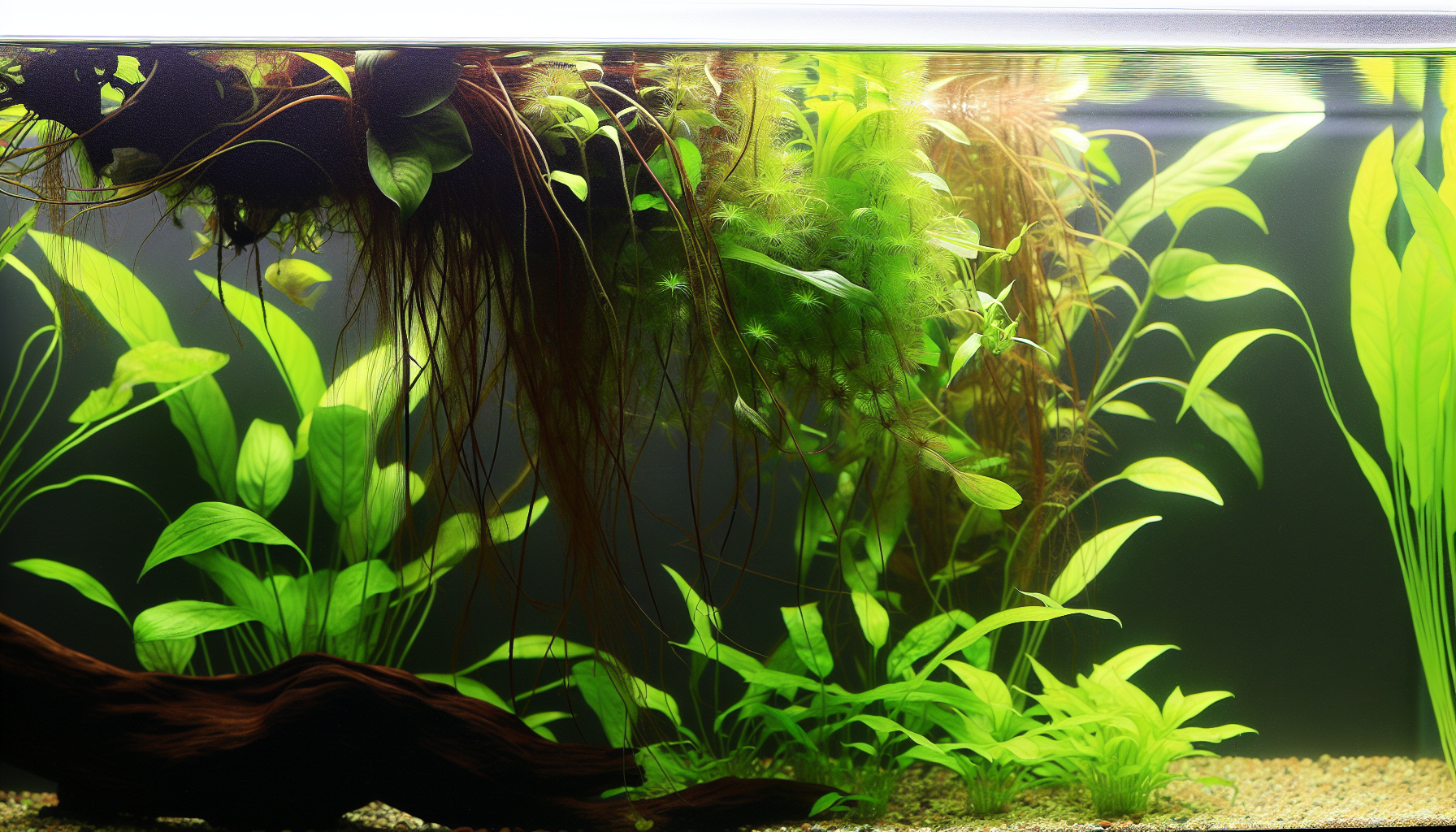
Having discussed the overall benefits and cultivation requirements of floating plants, we will now introduce some popular species. Each of these aquatic beauties has unique characteristics and visual qualities, making them a fantastic addition to any aquarium.
Salvinia Minima - The Water Spangles
Meet Salvinia Minima, also known as Water Spangles, or the water sprite. This fast-growing floating plant is admired for its textured surface leaves. Adaptable to various water conditions, it can double or triple in size within a week under optimal conditions.
Given its striking appearance and quick growth, it comes as no surprise that this plant is popular among aquarists.
Red Root Floaters - Phyllanthus Fluitans
The Red Root Floaters (Phyllanthus Fluitans) are a true spectacle in any aquarium. Native to South America, these plants are known for their deep red roots and fast surface coverage.
Their vivid color and accelerated growth make them a standout addition to any aquatic environment.
Limnobium Laevigatum - Amazon Frogbit
Amazon Frogbit is loved by many aquarium keepers for it's beauty and ease of propagation. Amazon Frogbit sends out short runners with new leaves from the mother plant. It typically needs medium lighting for 8-12 hours a day to thrive.
Water Lettuce - Pistia Stratiotes
While you might not want to make a salad out of this lettuce, it is perfect for the planted aquarium. This floating plant Water Lettuce is a simply easy to care for plant. Provide medium lighting and it will thrive in most all aquariums without much need of additional care.
DUCKWEED - LEMNA MINOR (Golf Ball Size)
You either love it or hate it. If you love it then you will end up hating it... Duckweed is a fast growing plant that can quickly take over an aquarium surface. It is a powerhouse at sucking up toxins from your tank and will provide cover for your shrimp in its root systems. Under some lighting it can even turn purple! All Jokes aside, many people keep duckweed in their aquarium and thin it out when it overgrows.
Integrating Floating Plants into Your Aquarium Design
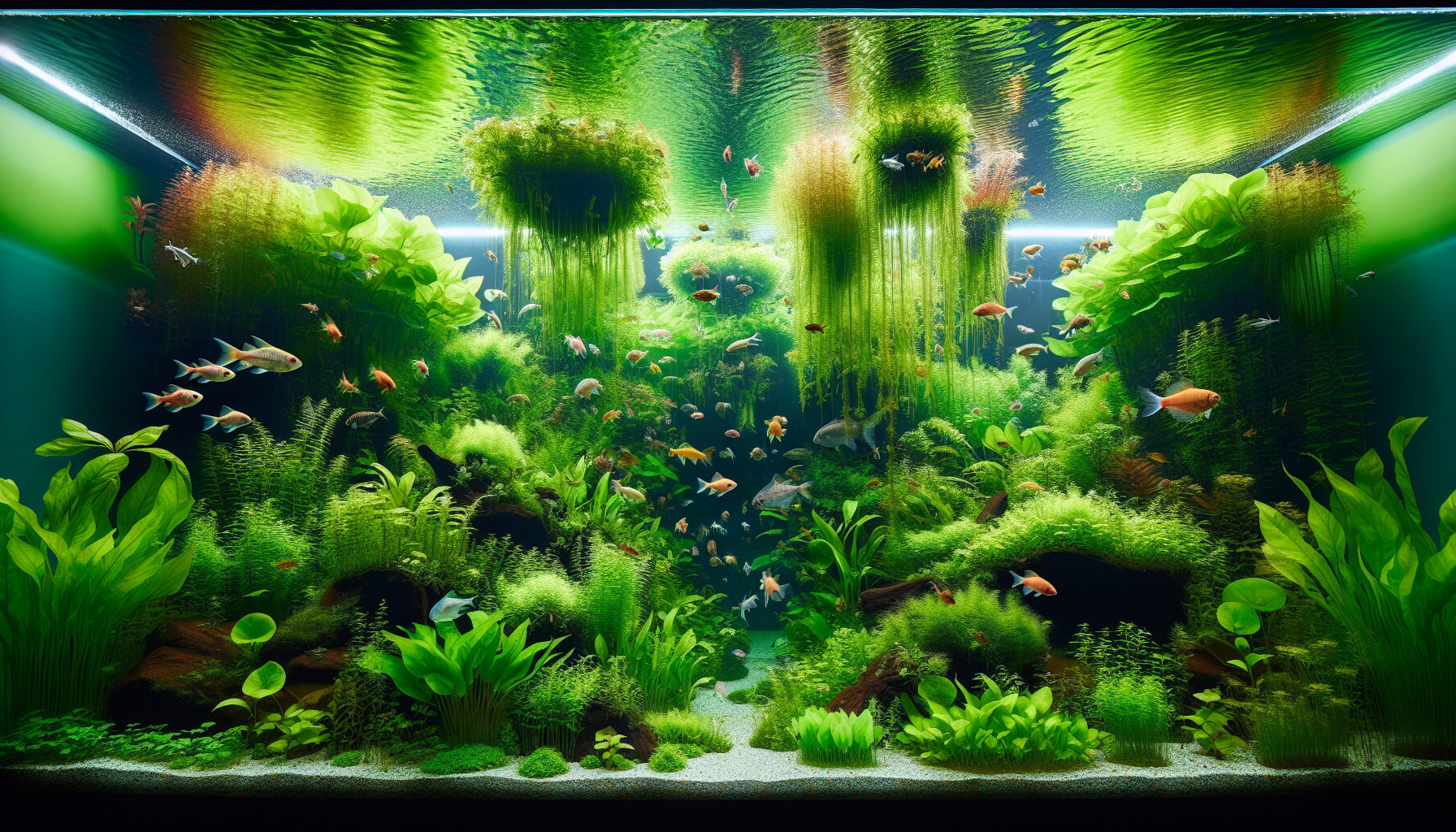
Incorporating floating plants into your aquarium design can be quite an art. It involves creating a balanced and visually appealing aquascape that complements your existing aquatic environment.
We will discuss some strategies to guide you in accomplishing this.
Balancing Plant Coverage
Balancing plant coverage is crucial in aquascaping. While floating plants add beauty and functionality to your tank, excessive coverage can overshadow other plants or restrict light. Therefore, it’s recommended to maintain floating plant coverage around 40-60% of the water’s surface.
Compatibility with Tank Mates
You must take into account the compatibility of the floating plants with your aquarium’s inhabitants when making a selection. Some plants may become an alternative food source for your fish, while others might not be resilient enough to withstand nibbling or uprooting. So, always select species that can coexist harmoniously with your tank mates.
Anchoring Techniques
Anchoring floating plants in desired areas of your aquarium can be achieved using airline tubing. This helps you control where the plants float, allowing you to create a designated area in your aquarium for them to flourish.
Whoever thought that controlling the positioning of your floating plants was impossible?
Care and Maintenance of Floating Aquatic Plants
To keep your floating plants looking their best, it’s important to give them the care they need. This includes regular pruning, water quality monitoring, and quarantining new additions.
We will examine each of these practices more thoroughly.
Pruning and Propagation
Regular trimming keeps your floating plants in check, controlling their rapid growth and maintaining their health. Excessive growth can overshadow other plants and deplete nutrient levels in the water.
Pruning also allows you to propagate new plants by separating healthy sections to grow independently.
Monitoring Water Quality
Maintaining optimal water quality is essential for the health of your floating plants. Regular testing of water parameters, such as ammonia, nitrate, and phosphate levels, can help prevent issues such as algae blooms and nutrient imbalances.
Keep in mind, your floating plants flourish optimally in clean, well-regulated water, with no debris left floating around.
Quarantining New Additions
It’s crucial to isolate new floating plants before introducing them to your aquarium. This helps prevent the spread of pests, diseases, and algae to your main aquarium.
We recommend a quarantine period of two weeks to confirm the plants are devoid of any potential hazards.
Enhancing Your Planted Tank with Floating Varieties
Floating plants can do wonders for your aquarium, improving both its aesthetics and ecosystem. From providing shade to aiding in oxygenation and offering safety for shy fish or fry, these plants are truly a valuable addition to your tank.
Complementary Planting Strategies
Combining floating and submerged plants in your aquarium can have several benefits:
- The floating plants provide shade and reduce light penetration, benefiting certain submerged plants that require lower light levels.
- Together, they can mitigate algae growth, as the floating plants compete with algae for nutrients and light.
- The combination of floating and submerged plants increases oxygenation in the water, creating a healthier environment for your aquatic pets.
Not only does this combination create a visually appealing aquarium, but it also helps to maintain an ecologically balanced ecosystem.
Benefits for Breeding Tanks
In a breeding tank, floating plants provide a safe haven for fish fry against potential predators. Plants like Water Lettuce create a complex environment with long roots that serve as a hiding place for fry and help in nitrate absorption, which can also aid in reducing fish waste. This makes them an ideal choice for breeding tanks.
Nutrient Cycling Boost
Floating plants play a pivotal role in nutrient cycling in your aquarium. By filtering and removing nutrients from the water, they create a self-sustaining environment. Plus, their position at the water’s surface allows them to efficiently utilize atmospheric CO2, enhancing their photosynthetic activity.
Assessing Plant Health
Keeping an eye on the health of your floating plants is of paramount importance. Healthy plants should exhibit vibrant green leaves without any signs of yellowing or browning. Robust roots are another indicator of a healthy plant, signifying efficient nutrient absorption.
Price Considerations
Although floating plants’ prices can vary, it’s important to strike a balance between budget limitations and specimen quality. From options as low as $2.99 to more premium varieties costing upwards of $21.87, there’s a wide range to suit different budgets.
Stock Availability
At The Shrimp Farm, we offer a variety of floating plants to suit your needs. So whether you’re looking for the fast-growing Salvinia Minima or the mosquito-deterring Azolla Filiculoides, we’ve got you covered.
Summary
Floating aquarium plants are truly a marvel of nature. They enhance the visual appeal of your tank, promote a healthier environment, and provide a safe haven for your aquatic pets. With the right care and maintenance, these plants can transform your aquarium into a thriving, magical underwater world. So why wait? Dive into the world of floating plants and let the magic unfold!
Frequently Asked Questions
Yes, floating plants are good for aquariums because they provide shade and create a calmer environment for the inhabitants. This can make certain aquatic species feel more at home.
The easiest floating plants for aquariums are Amazon Frogbit, water lettuce, Floating Fern, and Water Sprite. Give them a try and see which ones thrive in your tank!
To take care of floating plants in your fish tank, make sure to provide them with bright, direct light and consider adding a liquid fertilizer to the water for the nutrients they need to thrive. Enjoy a healthy and vibrant aquatic environment!
Yes, floating plants can improve the water quality of your aquarium by acting as natural filters, absorbing toxins and excess nutrients from the water, and preventing algae blooms.
To manage the growth of your floating plants, make sure to regularly prune and trim them. This will help them stay healthy and prevent them from overshadowing other plants or blocking light.
Sources:
https://www.fs.usda.gov/wildflowers/plant-of-the-week/lemna_minor.shtml
https://en.wikipedia.org/wiki/Lemnoideae
https://plants.ifas.ufl.edu/plant-directory/salvinia-minima/



 Shrimp
Shrimp Fish
Fish Crab &
Crab & Plants
Plants Foods
Foods Snails
Snails